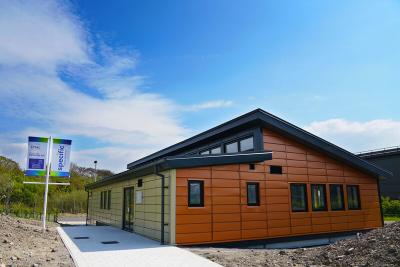A recent paper, written and launched by leading engineering consultancy, WSP, has revealed that applying a set of carefully researched recommendations on circular design have the potential to reduce construction time and costs by cutting resource use by up to 23% to meet government targets.
The research carried out by WSP looks into the implementation of ‘circular thinking’ in the built environment and infrastructure sectors at scale. After materials have been extracted, processed and used for construction, they’re then dug up or demolished at the end of their original use before, in most cases, being either discarded or recycled for use, often at a lower grade than they originally started.
We’re a supporter of @WSP_UK’s 10 recommendations for resource-efficient, circular design in buildings and infrastructure. Read them here: https://goo.gl/4RKAwv
Applying such a ‘linear’ approach is wasteful, which is why the recommendations in WSP’s paper focus on applying a more ‘circular’ approach - accelerating the use of flexible, adaptable and modular designs for buildings and infrastructure.
By following these recommendations and accelerating the use of circular designs such as modular buildings, the construction industry can cut resource use by 23%[[1]] and achieve the government’s target to double resource productivity by 2050.
“The construction industry is the largest user of resources in the UK economy today, so it needs to take rapid action”, says David Symons, UK Director of Sustainability at WSP. “We have to do something different and these 10 actions from WSP and supporting organisations show how the industry is stepping up and taking a leadership position itself.”
WSP’s recommendations are both practical and required, if we are going to increase our resource efficiency as an industry. Many of the recommendations will drive not just circular economic enablers but will help to deliver the badly needed increase in productivity in the built environment.
WSP’s recommendations are based around four key areas: skills; standards and policy; records and evidence; and finance and procurement. They include actions for government, the industry and governing bodies including: ‘Circular design principles to be included in all engineering, architecture and design degree courses from 2020’ and ‘Simplifying waste regulations as part of the UK’s emerging Resources and Waste Strategy’.
“It makes complete sense to embed these recommendations into government policy now” says George Baker, author of the paper and consultant at WSP. “They focus on the delivery of a key objective of the Industrial Strategy, the 25 Year Environment Plan and the Clean Growth Strategy.”
The recommendations have so far been supported by a number of companies, industry organisations and influencers including: Aldersgate, ArcelorMittal, Ashfords, Centre for Environment and Sustainability, Clean Energy BC, Costain, EIC, IEMA, Madaster, Morgan Sindall, Osborne, Tarmac, Tata Steel, UKGBC and the University of Leeds.
[1]
- If the UK aims doubles resource productivity, the figure for total material consumption in 2050 can be calculated using OECD’s projections of GDP, which is found to be 720 million tonnes.
- By 2050, construction materials are due to make up 21% (forecasted using trend lines of ONS data of domestic material consumption) of total material consumption to reach resource productivity targets.
- At 151 million tonnes, this is a 23% decrease from today’s amount of 197 million tonnes of material.















































































































































































